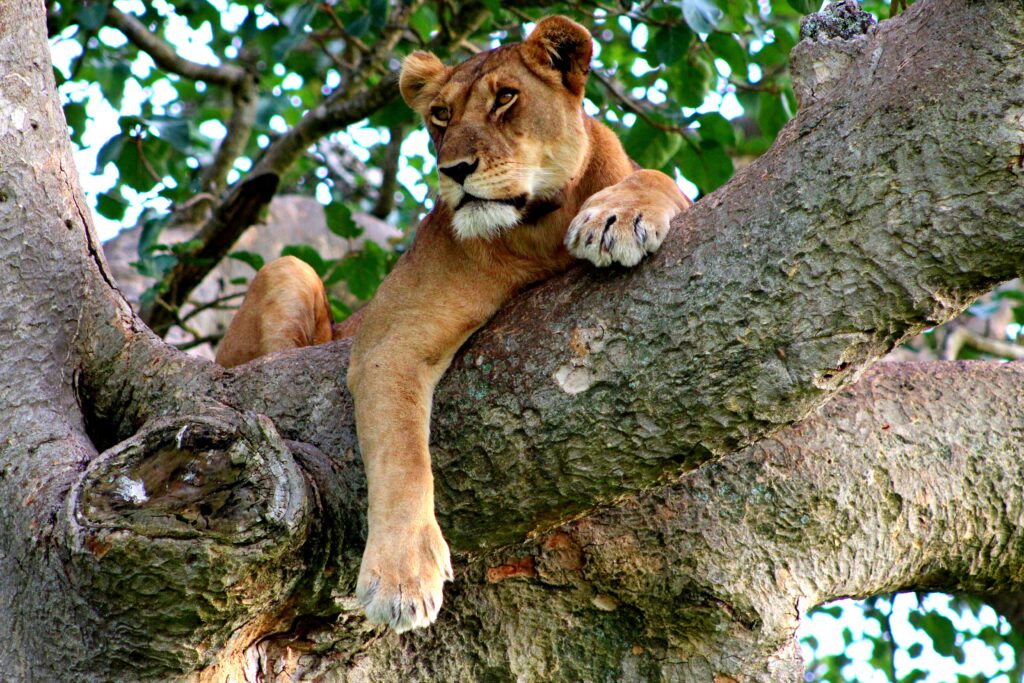Tree-climbing lions are a rare and captivating sight that can be observed in certain regions of Africa, including Uganda. Here are some fascinating facts about tree-climbing lions and they have been often spotted in Ishasha sector, Queen Elizabeth National park in Uganda:
v Behaviour: Tree-climbing lions exhibit a unique behaviour of climbing trees, which is not commonly seen in other lion populations. They are known to climb trees to escape the heat, avoid insects, and seek refuge from potential predators.
v Habitat: In Uganda, tree-climbing lions can be found in the Ishasha sector of Queen Elizabeth National Park. This region is renowned for its population of tree-climbing lions, offering visitors a rare opportunity to witness this extraordinary behaviour in the wild.
v Adaptation: The ability to climb trees is believed to be an adaptation to the environment in which tree-climbing lions live. By seeking elevated positions, lions can have a better vantage point to scan for prey, monitor their territory, and rest in the shade of the tree canopy.
v Age and Gender: Tree-climbing behaviour is not limited to a specific age or gender of lions. Both male and female lions, as well as cubs, have been observed climbing trees in search of comfort, safety, and a higher vantage point.
v Unique Sightings: Witnessing tree-climbing lions in Uganda’s Ishasha sector is a rare and thrilling experience for wildlife enthusiasts and safari-goers. The sight of a majestic lion perched high in a tree against the backdrop of the savannah is a sight to behold and a testament to the adaptability and resourcefulness of these apex predators.
v Conservation: The presence of tree-climbing lions in Uganda underscores the importance of habitat preservation and conservation efforts to protect these unique lion populations. By safeguarding their natural habitat and ensuring a sustainable ecosystem, we can continue to admire and study these extraordinary animals.
v Research and Study: Scientists and researchers are studying the behaviour and ecology of tree-climbing lions in Uganda to better understand the factors that influence their tree-climbing behaviour. By conducting research and monitoring these lion populations, we can enhance our knowledge of their unique adaptations and contribute to their conservation.

